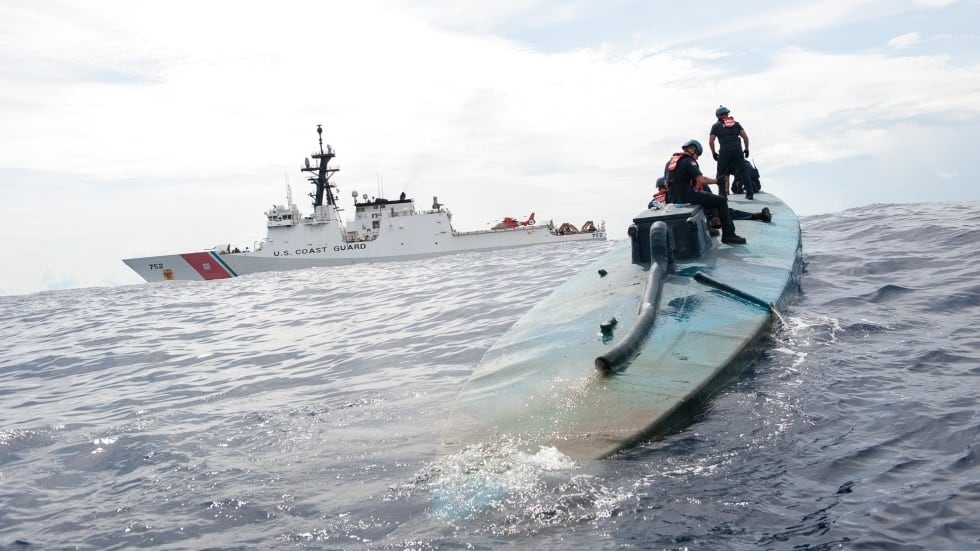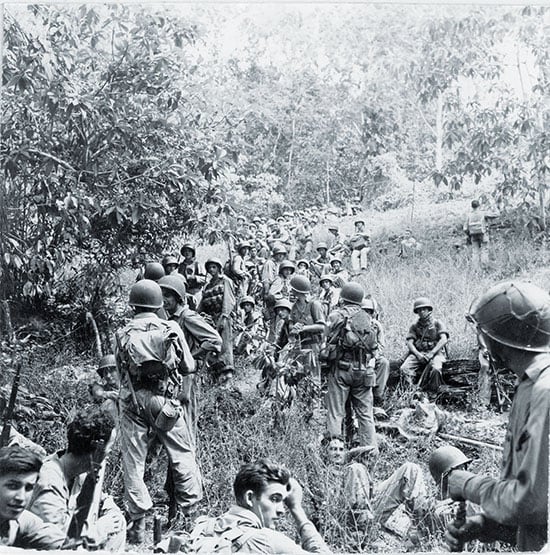A near-peer adversary first coercing then forcing Asian nations to bend to its will.
A series of islands and key maritime terrain slowly coming under that nation’s control.
Those pieces of territory becoming a way to keep any outside threats from attacking their Pacific homeland.
U.S. Marines landing on those islands to retake lost ground.
A picture of 1942 or today?
At this year’s virtual Modern Day Marine Exposition, Maj. Gen. Gregg Olson, Marine Corps staff director, laid out key similarities between the World War II Marine-led Allied offensive on Guadalcanal and adversary Japan and what commanders see coming when they look at China in the Indo-Pacific Command theater today.
RELATED

Small groups of Marines, strung out on atolls and island chains, operating within range of enemy fires in austere conditions. It all has a familiar ring.
Even the cyber concerns have echoes in the past, Olson said.
He compared code breaking efforts with big data analytics.
And the terrain hasn’t much changed. The same dense, forbidding jungles and vast distances of ocean await.
“This is a 21st Century fight on a 17th Century battlefield,” Olson said.
Even then, they had their own “sensor network.” A covered coastal guard run by Australians and New Zealanders gave Allied forces hours warning of Japanese movement.
Now that warning will come from an electronic device and minutes may be all the Marine gets.
Which means staying hidden becomes even more important.
“To be detected is to be targeted and to be targeted is to be engaged and killed,” Olson said.
Like a boxer, the Corps sees closing in as the best way to beat the punch.
That’s why the Pacific-based forces will remain and operate inside the weapons engagement zone, every day.
And neither Olson nor fellow speaker, Maj. Gen. Paul Rock, director of strategy and plans, pulled their own punches.
“There’s going to be no avoiding attrition,” Rock said. “The ability of a force to avoid loss and continue to operate decisively is critical.”
But to avoid that loss, much like a gunfighter, Marines have to shoot first.
“In order to shoot first, you’ve got to see first,” Rock said.
That’s why being inside the WEZ matters.
At the same time, supplying those frontline fighters with the tools they need to fight will be both a “critical requirement and critical liability,” Rock said.
The old, fixed forward bases are too vulnerable to the long-range fires that China brings to the fight, he said.
That means linkage to the Navy and supply chains and expendable assets for reconnaissance and counterreconnaissance will be key, he said.
That WEZ operating in the WEZ will, in a full-circle fashion, involve potentially deeper partnering with Japan, which occupies much of the first island chain around China’s coast.
Todd South has written about crime, courts, government and the military for multiple publications since 2004 and was named a 2014 Pulitzer finalist for a co-written project on witness intimidation. Todd is a Marine veteran of the Iraq War.




